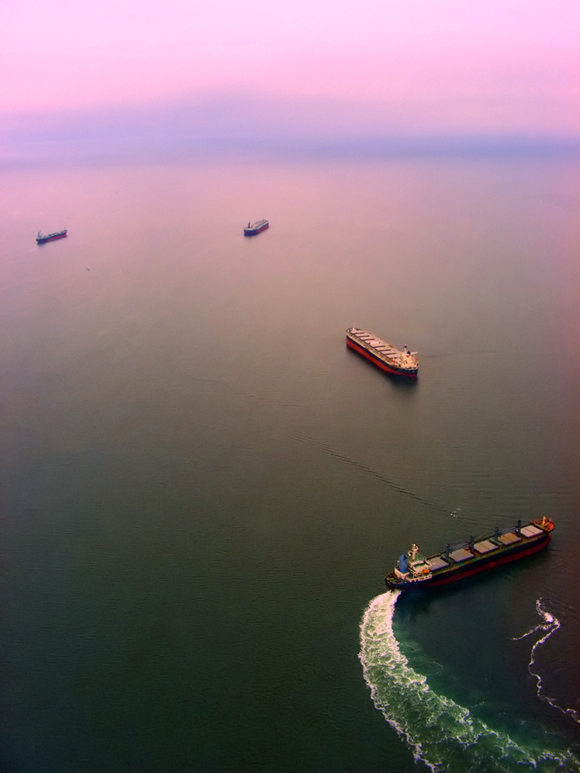Iron ore price falls to 64-month low
Fresh Chinese weakness pushes iron ore price to lowest since June 2009, but rising premiums for high-quality imported lump offers some hope.
The price of iron ore dropped to a nearly five-and-a-half year low on Tuesday amid increasingly negative sentiment on metals and minerals markets, a cloudy outlook for top consumer China and a supply surge.
The Northern China CFR 62% Fe benchmark import price tracked by The SteelIndex was pegged at $77.10 a tonne on Tuesday, down nearly 1% on the day.
The steelmaking raw material is now trading at the lowest price since June 15, 2009 and nowhere near the all-time high just shy of $192 a tonne hit in February 2011.
After an uneventful second half of 2013 when the price was stuck between $130 and $140 a tonne for 148 days straight, 2014 has brought on a relentless slide with losses of just under 43%.
The expansion of the Big 3 has been well documented (and lamented), but the fortunes of Fortescue Metals Group is even more emblematic of the supply flood.
FMG shipped its first ore to China in May 2008. Now it’s a 155 million tonne a year operation – equal to the total tonnage Brazil shipped to China last year. (Not that Vale is taking this lying down – S11D on its own will bring 90 million new tonnes on stream within only two years.)
Chinese domestic supply
While the impact of additional supply is clear and Chinese imports continue to climb and could reach more than 950 million tonnes at current growth rates, domestic Chinese production is much harder to quantify.
The country’s miners produce some 350 million – 400 million tonnes a year on a 62% Fe-basis, although reliable stats are lacking (this figure is calculated working backwards from pig iron production).
Two short years ago $120 a tonne were considered a price floor; the thinking being that any extended period below this level would drive out high cost Chinese iron ore miners struggling with grades as low as 15%.
When $120 came and went, $100 was considered the level swing producers would abandon the market. With ore looking as if it’s settling in below $80 assumptions about Chinese domestic supply are being severely tested.
Despite production costs north of $90, Chinese iron ore miners have actually been expanding, increasing production by more than 8% this year, and the reasons for their stickiness are plenty:
- Not all Chinese production is at the top of the cost curve
- Many mines are captive to steel mills
- State-owned mines are not necessarily run on a commercial basis (retaining jobs takes precedence over profitability)
- Local governments have been propping up mines with tax breaks, other incentives
- Long-term agreements, security of supply and logistics for inland mills trump import discounts
- Beijing, already importing over 70% of demand, may be wary of increasing reliance on foreign miners any further
War on pollution
The price is also being influenced negatively by short term factors as Beijing gears up to host the Asia-Pacific Economic Cooperation summit.
The Chinese capital and environs are imposing the most stringent pollution controls since the 2008 Summer Olympics to curb smog during the meeting of global leaders.
Steel mills in Hebei province, the country’s steel producing hub in the region of the capital, are temporarily shutting off production, exacerbating the iron ore price declines.
But further out China’s declared war on pollution should have positive consequences for exporters; provided the quality is right.
Because Chinese ore is of such a low quality most Chinese fines require a process called sintering before being fed into blast furnaces.
Sintering adds to the environmental impact and costs which does not fit well with Beijing’s green agenda and plans to eliminate overproduction in the steel sector.
China’s steelmakers have been substituting domestic supply with so-called “lump” ore from Australian, South African and South American producers that lower costs and cut pollution by reducing the need for sintering.
Premiums for high-quality lump last week hit the highest since April with some cargoes being put up for sales for as much as $94 a tonne according to Platts data. Pellets premiums have also risen, although still below the $41 a tonne reached in March this year.
More News
{{ commodity.name }}
{{ post.title }}
{{ post.date }}


2 Comments
Greg
I worked in the iron ore industry and I was always concerned with the quality control of the finial product that was been exported every time I informed my employer it just fell on deaf ears these large company’s have only got there selves to blame for the big slump in prices for such a poor grade they export : Big output crap quality: Share holders please take control,
Richard
Who wrote this article ? From what company? Whats their specialty Mining journalism at its worst or? Put your name too your articles also your company you work for! Don’t be scared harden up princess. Manipulation and global bullshit from very ordinary people.